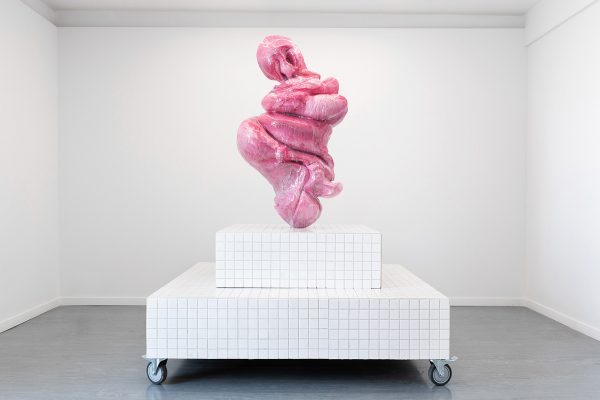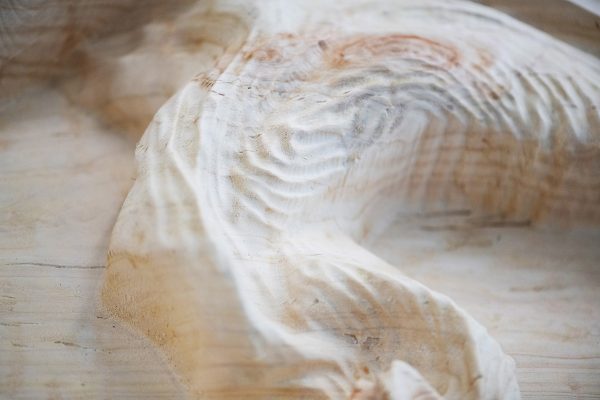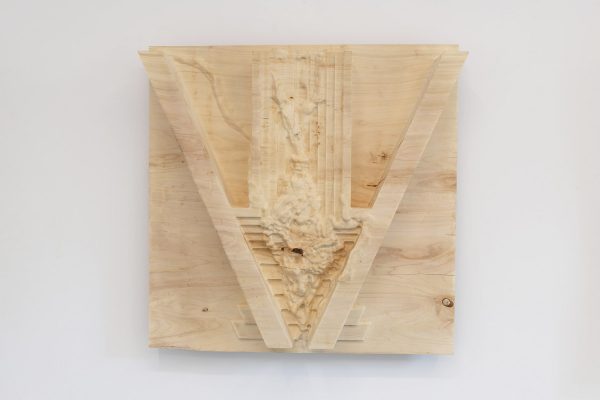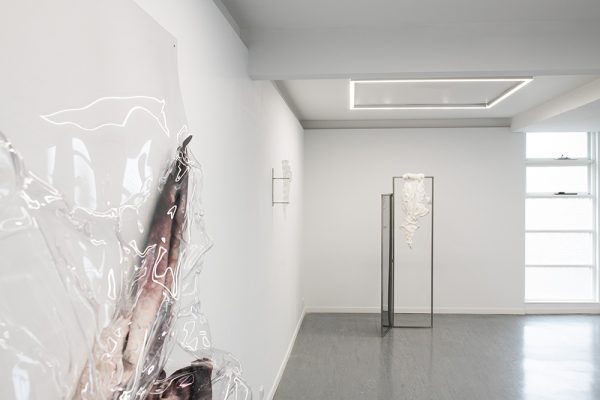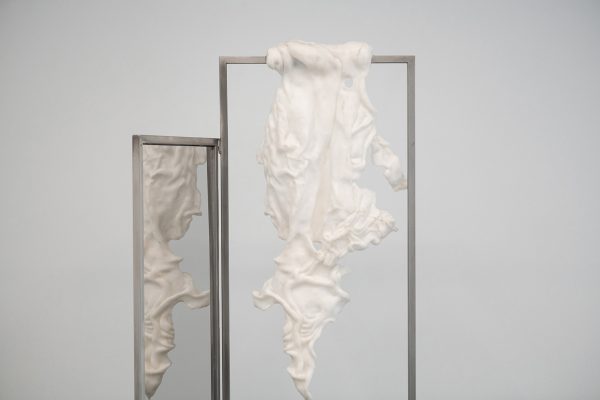Artist's Statement
Rippling endlessly.
Harsh lines absorb into a fluid landscape as we zoom out.
Moving further and further away, a new cube forms out of a substance so soft and loose we cannot touch it.
The form is defined.
But as we move further away.
Away, although never without.
More and more cubes appear to assemble.
Until a pink fleshy mass emerges.
We are tethered to it.
But we always were.
Only now, does it become clear because it looks like us.
– Sophie Prince
I was compelled to respond to Jeremy Blincoe’s exhibition The Fragile Skin of the World with an automatic poem. It felt like the best way to let the forces of the work move through the layers of their materiality and let them permeate matter organically to gradually take on a new form – moving through my fingertips, landing, for a moment, as words. And the journey of this stream of impact is by no means complete – indeed, as a reader the rippling out of material and mental vibration continues through you now.
Reflecting on the impulse, this response is in many ways a testament to the thinking behind the works, in that they are born out of considerations and processes that dissolve dualisms and distinctions – registering infinite interconnectivity.
Blincoe’s approach to material is generally guided by non-hierarchical curiosity, and for The Fragile Skin of the World he has harnessed this principle and applied it to unifying disparate materials, disciplines, textures and moments in time – alluding to the mysterious thread that weaves through space and time, defying definition and human comprehension. Capacities for connection and form are boundless but Blincoe has seemingly drawn some lines in the sand through these pieces that offer moments of cohesiveness and thereby invite reflection on the vastness. When flesh melts to rock and a giant passes (2022) is a work that very much took me to this place. A sculptural piece, When flesh melts to rock and a giant passes is loaded with trickery of the senses and the unhinging time – a masterful combination found often in the work of science fiction writers (a genre of writing that is of enduring interest and inspiration to Blincoe), whereby novel combinations reveal the very absurdity of reality. In this work, the fluidity and at times iridescent shimmering of the thermoplastic are at odds with the reality of the material, which is in fact dense, sturdy and man-made. The thermoplastic cocoons a photograph from the artist’s archive – taken years ago in Iceland – it depicts a decaying beached whale. No longer recognisable in this work, the whale collapses into the layering of time, matter, nature and the man-made. A form of abstraction that on deeper thought, is perhaps closer to reality than any framed portrait.
From Unruliness at the heart – the carved wooden tableaus that negotiate nature and technology through combining CNC routing technology with organic materials; as well as the perceptual sensibilities of the hard and the soft – to sculptural pieces such as An opening to all possible outsides – a commanding piece comprised of steel scaffolding and mirrors that are uncannily placed in that they sever your head when you peer at them; skin-like silicon drapery instead topping the life-size work – the exhibition presents seemingly disparate fragments that function to probe at the slipperiness of separateness. Take also the grand sculpture River of absolute intimacy (2022) that slowly reveals itself as you move through the exhibition. Composed of sleek, uniform white cubes that make up a plinth that grounds an almost Baroque swirl of fuchsia and white foam – frozen in time by a slick coat of fibreglass and resin – again we see on first glance, elements such as material, colour and form in contrast. But, in the same way that we can see geometric fractals in the softest of flowers, I return to reframe these forms as only being separated for a moment by one lens of perception.

